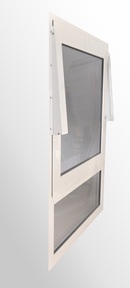Designing dementia-friendly care homes can make 'fundamental difference' to residents with dementia
Having dementia can be extremely confusing and frightening, so designing a care home that is dementia-friendly is vital to improving residents’ lives.

With eighty per cent of care home residents living with some form of dementia, it is essential that dementia-friendly design is an integral part of every residential setting.
Many new care homes are now being designed with dementia in mind, but even care homes which are non-purpose built can do certain things to adapt the environment for people with dementia.
The Dementia Services Development Centre at Stirling University, which has developed best practice guides for a whole range of settings including care homes, acute care and hospitals, claims that “getting design right can make a fundamental difference to the lives of people with dementia.
“It can improve the life experiences and increase the life expectancy of those affected by dementia”.
There are a whole range of innovations that can make people’s lives calmer and happier.
Reminiscence
Reminiscence in the form of era-specific pictures that the person will often have a powerful connection with, can be a very useful aid in helping people with dementia, remember how to find their way around a care home.
“Pictures are one of the main features that make a house a home and so it should be in a care home too, but there is a much more important role that pictures can play.
“Pictures should be chosen that are of an era likely to be familiar, and on meaningful subjects such as food, fashion or major news and social events for example.
“Choosing pictures carefully will introduce a familiar element into what is an otherwise unfamiliar environment. This creates the opportunity to theme spaces and corridors so residents recognise where they are in their home,” according to Peter Rose, director of Find Signage, which produces dementia-friendly products,
Different coloured bedroom doors
People with dementia can have real problems remembering where their room is in a care home where all the bedroom doors look the same and being unable to find their bedroom can leave them extremely anxious and stressed.

Mr Rose says: “Featureless corridors can be both daunting and dull for a person with dementia.
“A lack of landmarks, inadequate lighting, and doors which all look the same can be a source of great anxiety and stress.
“Imagine a care home where each corridor is decorated as though it were a street with different coloured doors, window boxes on window sills and street names.
“How easy will it be to find your way home if you know you live on Penny Lane, next to the picture of the 1950s Bovril advert and your room has a red door?”
Eating
Simple tasks such as eating can be another problem for people with dementia, with cutlery becoming more difficult to use as the person with dementia loses their coordination skills.
Care homes can purchase adapted cutlery and plate guards which will reduce spillages. Finger food is another option.
Guidance from Coventry and Warwickshire University Hospitals recommend using contrasting coloured plates as this can help to make food easier to see on the plate. Pastel colours are difficult to recognise so try to use primary colours (red, yellow and blue) which are recognised for longer by people as their dementia progresses.
Care homes should also avoid distracting items such as patterned table cloths, vases or lots of condiments.
Making the environment safe
Many residents in care homes are unsteady on their feet and research has shown that older people in residential care are three times more likely to fall than older people living in their own homes, with the fall often being much more serious.

This heightened risk of falls in care homes is down to a number of factors including physical frailty, the presence of long term conditions, physical inactivity, taking multiple medications and the unfamiliarity of new surroundings.
Jerry Smith, director of Primera Life which specialises in products that will make life safer for people who are frail or living with dementia, says: “Imagine you’re a resident. If you’re unsteady on your feet and scared of falling, it’s tempting to grab hold of whatever’s nearest – those curtains, maybe.
“We have CLIK load-release bathroom fittings and curtain tracks, which simply push back together undamaged if they are pulled down.”
People with dementia can get confused over whether a window is a door and they lean outside to check. So Primera Life sells window restrictors which prevent windows being opened too far.
Toilet and Bathroom equipment
There are three aspects to toileting - finding the toilet, using the toilet and keeping safe, according to Find Signage.
“We take finding the toilet for granted yet we’ve all experienced the stress and anxiety of needing a toilet and not being able to locate one. When dementia is involved, the frustrations are multiplied many times over resulting in anxiety, challenging behaviour and possibly the loss of dignity.
“Our solutions are all about using highly visible, high contrast colour to establish a clear route to the toilet, and once there, to use the same principles to ‘decypher’ that environment by making the important things, grab rails and the toilet itself, easier to see. This boosts confidence and independence as well as helping to maintain or restore dignity,” says Mr Rose.
Find Signage recommends locating beds so en-suite toilets are visible from the bed, accentuate doors and/or door frames by decorating them in a contrasting colour and fit the toilet with contrasting coloured seats, drop-down support bars, grab rails etc.
Is your care home dementia friendly?
The think tank, the King’s Fund, has produced a range of resources to help care homes, hospitals, primary care providers and housing providers become more dementia-friendly. Care homes can download an assessment tool which will help them determine how dementia-friendly their home is. This can be found at http://www.kingsfund.org.uk/projects/enhancing-healing-environment/ehe-design-dementia
More information on dementia-friendly design can be found at The Dementia Services Development Centre at the University of Stirling which has designed a virtual care home demonstrating the features that will make a difference to people with dementia http://dementia.stir.ac.uk/design/virtual-environments/virtual-care-home
Latest Features News
 25-Nov-19
2019 Election: Boris Johnson leaves social care in 'too difficult box' but Labour vows to end 'crisis'
25-Nov-19
2019 Election: Boris Johnson leaves social care in 'too difficult box' but Labour vows to end 'crisis'
 18-Oct-19
Podcast: Wendy Mitchell and dementia: 'My biggest fear is not knowing who my daughters are'
18-Oct-19
Podcast: Wendy Mitchell and dementia: 'My biggest fear is not knowing who my daughters are'
 27-Sep-19
Exclusive: Care minister backs care workers' call for time off to grieve and attend funerals
27-Sep-19
Exclusive: Care minister backs care workers' call for time off to grieve and attend funerals
 19-Sep-19
Podcast: Gyles Brandreth says poetry helps ward off dementia
19-Sep-19
Podcast: Gyles Brandreth says poetry helps ward off dementia
 30-Aug-19
Edinburgh Fringe funnyman joins comics facing toughest audience at care home gig
30-Aug-19
Edinburgh Fringe funnyman joins comics facing toughest audience at care home gig